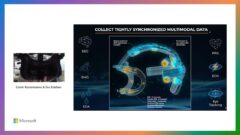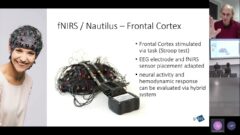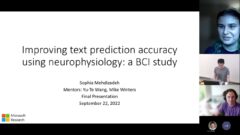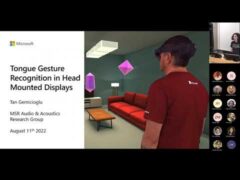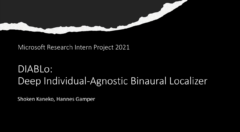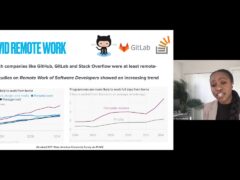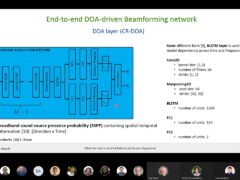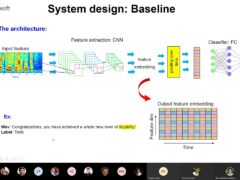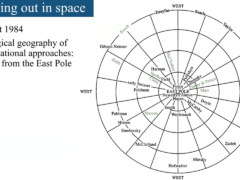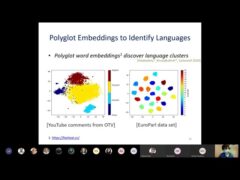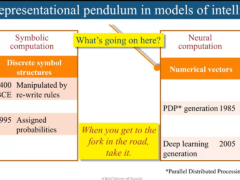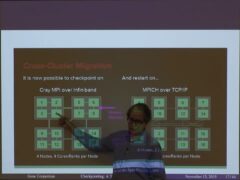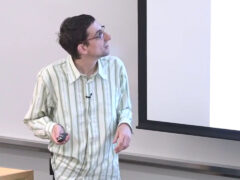Pixel based Interaction Techniques
Our society has entered a data-driven era, in which not only enormous amounts of data are being generated every day, but there are also growing expectations placed on their analysis. Exploring these massive and complex datasets is essential to making new discoveries and creating benefits for people, but it remains a very difficult task; most data have become simply too large and often have too short a lifespan, i.e. they change too rapidly, for classical visualization or analysis methods to handle it properly. This simple observation has leaded my researches to investigate accurate and fast tools for multivariate data exploration and management. During these past years, I investigated several application domains: air traffic control, medical visualizations, trajectory visualization, image processing, software visualization, personal computer management. For each of these application domains, I developed interactions techniques and data processing algorithms: Skeleton, Kernel Density Estimation and attribute basedEdge Bundling (SBEB, KDEEB, ADEB), trajectory spreading interaction, animated transitions, augmented reality visualizations. These algorithms and interactive techniques has been integrated and tested into different software: FromDaDy, MoleView, Active Progressbar, Strip’Tic, ColorTunneling. These developed algorithms and interactive techniques share a same technical specificity: they embed pixel based techniques. As such, data (i.e. decimal values) can be handled in their original dimensions, or they can be projected into different one. With pixel based technique, data are projected into raster maps (i.e. integer values). This collection of techniques trends to bridge the gap between GeoVis, InfoVis, SciVis and Visual Analytics by providing a common set of interactive tools. Even if these techniques have proven to be efficient, many questions remain. In this document, I will reflect upon the validity of these pixels based techniques in terms of data accuracy, scalability, limitations, domain applicability and I will finally try to envisage their future usages. Keywords: InfoVis, GP-GPU, Pixel Based Techniques, Interactive Visualization, Demos, Air traffic Control, Edge Bundling, Hololens
- 日期:
- 演讲者:
- Christophe Hurter
- 所属机构:
- The French Civil Aviation University (ENAC) in Toulouse, France
-
-

Steven Drucker
Partner Research Manager
-
-
系列: Microsoft Research Talks
-
Decoding the Human Brain – A Neurosurgeon’s Experience
Speakers:- Pascal Zinn,
- Ivan Tashev
-
-
-
-
Galea: The Bridge Between Mixed Reality and Neurotechnology
Speakers:- Eva Esteban,
- Conor Russomanno
-
Current and Future Application of BCIs
Speakers:- Christoph Guger
-
Challenges in Evolving a Successful Database Product (SQL Server) to a Cloud Service (SQL Azure)
Speakers:- Hanuma Kodavalla,
- Phil Bernstein
-
Improving text prediction accuracy using neurophysiology
Speakers:- Sophia Mehdizadeh
-
-
DIABLo: a Deep Individual-Agnostic Binaural Localizer
Speakers:- Shoken Kaneko
-
-
Recent Efforts Towards Efficient And Scalable Neural Waveform Coding
Speakers:- Kai Zhen
-
-
Audio-based Toxic Language Detection
Speakers:- Midia Yousefi
-
-
From SqueezeNet to SqueezeBERT: Developing Efficient Deep Neural Networks
Speakers:- Sujeeth Bharadwaj
-
Hope Speech and Help Speech: Surfacing Positivity Amidst Hate
Speakers:- Monojit Choudhury
-
-
-
-
-
'F' to 'A' on the N.Y. Regents Science Exams: An Overview of the Aristo Project
Speakers:- Peter Clark
-
Checkpointing the Un-checkpointable: the Split-Process Approach for MPI and Formal Verification
Speakers:- Gene Cooperman
-
Learning Structured Models for Safe Robot Control
Speakers:- Ashish Kapoor
-





